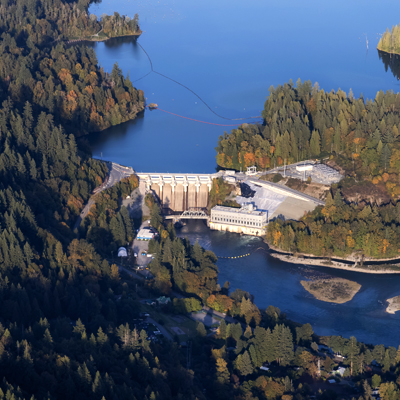Abstract
Canada’s polytechnics have long been at the forefront of innovations in sustainability and combatting climate change. These institutions have the capacity to play a critical role in driving the adoption of climate-conscious practices throughout industry and the wider community. As the need to move past sustainability and propel the adoption of regenerative practices is better understood, polytechnics are uniquely positioned to drive this shift. This paper explores the concept of regenerative design and how Canada’s polytechnics have employed on-campus initiatives and infrastructure projects in three broad categories: production of excess energy, recycling and reusing waste or runoff, and ecological (re)integration. Through these endeavours, the institutions are positioning themselves as role models and intermediaries able to introduce and help stakeholders adopt regenerative practices. Maximizing this capacity is an important way the Government of Canada can achieve its climate-related objectives as laid out in the 2022 Federal Sustainable Development Strategy. By harnessing polytechnic regenerative expertise and their deep ties to both industry and their surrounding communities, Canada will be better positioned to meet its ambitious climate targets.
References
About the Confluence. The Confluence. (2021). https://theconfluence.ca/
British Columbia Institute of Technology. (2008). Celebrating 50 Years of Leadership in Aerospace. British Columbia Institute of Technology. https://www.bcit.ca/files/marcom/pdf/bcit_aerospace0708.pdf
Cox, A. (2021). The confluence: Possibly the world’s Greenest Home.The Calgary Herald. https://calgaryherald.com/life/homes/new-homes/the-confluence-possibly-the-worlds-greenest-home
Ellen MacArthur Foundation. (2022). Circular Economy Introduction. Ellen MacArthur Foundation. https://ellenmacarthurfoundation.org/topics/circular-economy-introduction/overview
Environment and Climate Change Canada. (2021). Achieving a Sustainable Future: Draft Federal Sustainable Development Strategy 2022 to 2026. Environment and Climate Change Canada. https://www.fsds-sfdd.ca/downloads/2022-2026_DRAFT_FSDS.pdf
Whittingham, A. (2020). Facilities Operations and Sustainability Waste Audit Report. Fanshawe College. https://www.fanshawec.ca/sites/default/files/2020-07/waste_audit_report.pdf
Fanshawe College. (2022). Sustainability Catalogue. Fanshawe College. https://www.fanshawec.ca/about-fanshawe/corporate-info/sustainability/sustainability-catalogue
Government of Canada. (2021). Introducing Our Strategy. The Federal Sustainable Development Strategy. https://www.fsds-sfdd.ca/en/introducing-our-strategy
Humber College. (2021). Humber Is a Certified Bee Campus. Humber College Office of Sustainability. https://humber.ca/sustainability/humber-certified-bee-campus
Kwantlen Polytechnic University. (2016). Efficiency Improvements Using Technology. Kwantlen Polytechnic University. https://www.kpu.ca/sustainability/efficiency-improvements-using-technology
Mang, P. & Reed, B. (2012). Regenerative Development Regenerative Development and Design. Encyclopedia of Sustainability Science and Technology, 8855–79. https://doi.org/10.1007/978-1-4419-0851-3_303
Olympic International. (2020). BCIT Aerospace. https://www.olympicinternational.com/projects/bcit-aerospace/
Prior, P., Miller, G., Gonsalves, N., & Moleirinho, P. (2012). Seneca College King Campus Terrestrial Biological Inventory and Assessment. Toronto and Region Conservation Authority. https://trca.on.ca/dotAsset/186190.pdf
Red River College Polytechnic. (2018). Bees: What’s All the Buzz about?. Red River College Polytechnic. https://www.rrc.ca/redgreen/initiatives/bees/
Rohlfing, C. (2021). Regenerative Design Doesn’t Start with a Napkin Sketch. Buildings. https://www.buildings.com/articles/42852/regenerative-design-napkin-sketch
Seneca College. (2021). Our Path Forward: Seneca Sustainability Plan 2021-2026. Seneca College. https://www.senecacollege.ca/content/dam/projects/seneca/about/sustainability/documents/seneca-sustainability-plan.pdf
Thomsen, C. (2013). Sustainability (World Commission on Environment and Development Definition). Encyclopedia of Corporate Social Responsibility, 2358–63. https://doi.org/10.1007/978-3-642-28036-8_531
UCAR. (2022). Predictions of Future Global Climate. Center for Science Education. https://scied.ucar.edu/learning-zone/climate-change-impacts/predictions-future-global-climate
United Nations. (2021) The Paris Agreement. United Nations. https://www.un.org/en/climatechange/paris-agreement.
United States Environmental Protection Agency. (2021).Learn About Sustainability. United States Environmental Protection Agency. https://www.epa.gov/sustainability/learn-about-sustainability#what
University of California Los Angeles. (2021). What Is Sustainability?. UCLA Sustainability. https://www.sustain.ucla.edu/what-is-sustainability/

This work is licensed under a Creative Commons Attribution-NonCommercial-NoDerivatives 4.0 International License.

